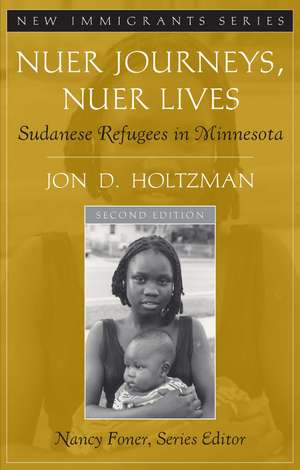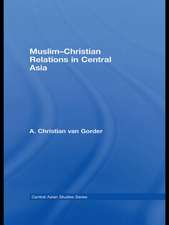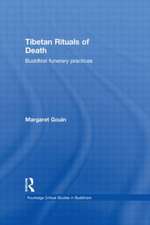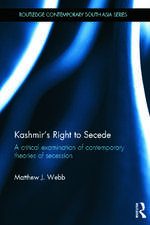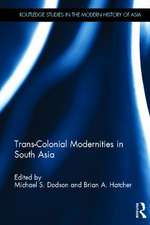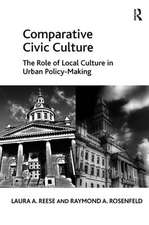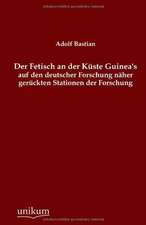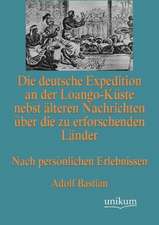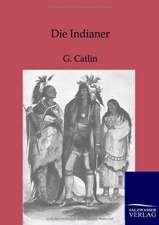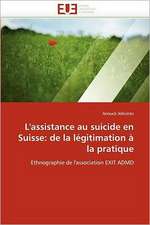Nuer Journeys, Nuer Lives: Sudanese Refugees in Minnesota
Autor Jon D. Holtzmanen Limba Engleză Paperback – 25 apr 2007
It provides an opportunity to examine issues of current importance within anthropology, such as social change, transnationalism, displacement, and diaspora in an easy to understand manner.
In understanding the experiences of the Nuer, students will not only gain insights into the world refugee problem and the role of immigration in the United States, they will also learn about the features of Nuer life which are considered a standard part of the anthropology curriculum.
The book juxtaposes elements of Nuer culture which are well-known within anthropology — and featured in most anthropology textbooks — with new developments arising from the immigration of many other Nuer to the U.S. in the 1990s as refugees from civil war in southern Sudan.
Consequently, this book will fit well within existing anthropology curricula, while providing an important update on descriptions of traditional life.
Preț: 405.66 lei
Nou
Puncte Express: 608
Preț estimativ în valută:
77.63€ • 80.59$ • 64.73£
77.63€ • 80.59$ • 64.73£
Carte tipărită la comandă
Livrare economică 24 martie-07 aprilie
Preluare comenzi: 021 569.72.76
Specificații
ISBN-13: 9780205543328
ISBN-10: 0205543324
Pagini: 160
Dimensiuni: 138 x 216 x 9 mm
Greutate: 0.2 kg
Ediția:2Nouă
Editura: Taylor & Francis
Colecția Routledge
Locul publicării:Oxford, United Kingdom
ISBN-10: 0205543324
Pagini: 160
Dimensiuni: 138 x 216 x 9 mm
Greutate: 0.2 kg
Ediția:2Nouă
Editura: Taylor & Francis
Colecția Routledge
Locul publicării:Oxford, United Kingdom
Public țintă
UndergraduateCuprins
Foreword to the Series
Acknowledgments
Preface
I. Introduction
II. Nuer Journeys: War, Flight, and Resettlement
III. The Birth of a Community
IV. Jobs, Welfare, College, and Cars
V. Gender, Generation, and Family Change
VI. Nuer Refugees in the American Community
VII. Looking Forward
References
Acknowledgments
Preface
I. Introduction
II. Nuer Journeys: War, Flight, and Resettlement
III. The Birth of a Community
IV. Jobs, Welfare, College, and Cars
V. Gender, Generation, and Family Change
VI. Nuer Refugees in the American Community
VII. Looking Forward
References
Descriere
This book examines contemporary migration to the United States through a surprising and compelling case study – the Nuer of Sudan, whose traditional life represents one of the most important case studies in the history of anthropology.
It provides an opportunity to examine issues of current importance within anthropology, such as social change, transnationalism, displacement, and diaspora in an easy to understand manner.
In understanding the experiences of the Nuer, students will not only gain insights into the world refugee problem and the role of immigration in the United States, they will also learn about the features of Nuer life which are considered a standard part of the anthropology curriculum.
The book juxtaposes elements of Nuer culture which are well-known within anthropology — and featured in most anthropology textbooks — with new developments arising from the immigration of many other Nuer to the U.S. in the 1990s as refugees from civil war in southern Sudan.
Consequently, this book will fit well within existing anthropology curricula, while providing an important update on descriptions of traditional life.
It provides an opportunity to examine issues of current importance within anthropology, such as social change, transnationalism, displacement, and diaspora in an easy to understand manner.
In understanding the experiences of the Nuer, students will not only gain insights into the world refugee problem and the role of immigration in the United States, they will also learn about the features of Nuer life which are considered a standard part of the anthropology curriculum.
The book juxtaposes elements of Nuer culture which are well-known within anthropology — and featured in most anthropology textbooks — with new developments arising from the immigration of many other Nuer to the U.S. in the 1990s as refugees from civil war in southern Sudan.
Consequently, this book will fit well within existing anthropology curricula, while providing an important update on descriptions of traditional life.
